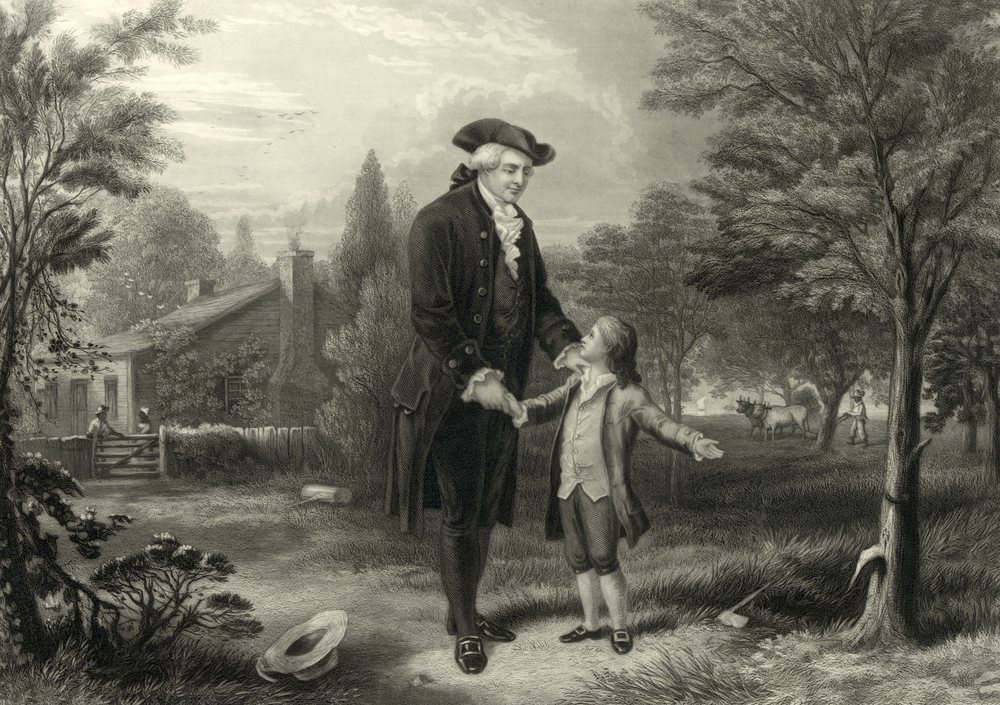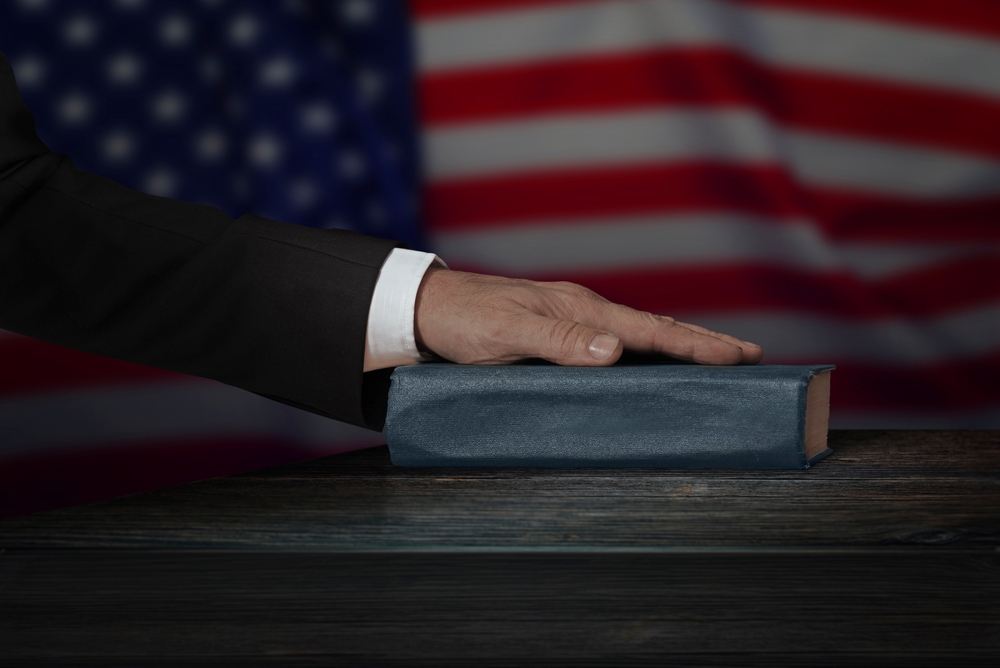After reading this history of US Presidents, vote in the comments for your favorite:
The presidency of the United States is one of the most powerful and visible positions in the world. Since the founding of the nation in 1776, America has seen a wide range of leaders take on the immense responsibility of guiding the country through peace and war, growth and recession, progress and controversy. From the very first president, George Washington, who took office in 1789, to today’s sitting president, each administration has added a unique chapter to the story of the United States.
Some presidents are remembered for their achievements in wartime or their success in building the economy. Others are known for social progress, landmark legislation, or moments of crisis that tested the strength of the Constitution.
And while not every leader left office with high approval ratings or a spotless record, each contributed to the evolution of the executive branch and the democratic system as a whole.
Now, let’s take a closer look at the lives and presidencies of the 46 men who have served as Commander-in-Chief of the United States. Maybe your favorite is on this list!

George Washington (1789–1797)
We begin the list of the US Presidents in chronological order with George Washington. As the first US president, he set important precedents. He led the country after the Revolutionary War and chose not to serve more than two terms, helping define the role of future US presidents.
John Adams (1797–1801)
John Adams, the second president, was a key figure in the American Revolution. He avoided war with France during a tense time and helped keep the young country stable. He dealt with tensions with France and passed the controversial Alien and Sedition Acts. He was also the first to live in the White House.
Thomas Jefferson (1801–1809)
Jefferson was the third US president who wrote the Declaration of Independence and made the famous Louisiana Purchase in 1803, doubling the size of the U.S. Jefferson was a key figure in the founding of the United States. However, he frequently wrote to friends about his desire to leave public service and go back to his Virginia home.
During his lifetime, Jefferson owned roughly 600 slaves. He did, however, express hatred for slavery. He thought slave owners would face harsh punishment from God. Of course, Jefferson himself stated that “all men are created equal” and that they are entitled to “Life, Liberty, and the pursuit of Happiness” in the Declaration of Independence.
However, Jefferson did not abolish slavery by using his political influence. He anticipated that future generations would allow slavery to gradually fade away throughout the nation.
James Madison (1809–1817)
James Madison led the nation during the War of 1812 and helped strengthen federal power. He was a key author of the Constitution, earning him the nickname “Father of the Constitution.” Madison proceeded to convince people to sign on to the proposed Constitution. He clarified how any one branch of government would be kept from growing too strong by a system of checks and balances.
Madison is also one of the U.S. presidents who drafted the amendments that eventually became the Bill of Rights in response to popular demands for greater protection for individual liberties. It’s funny to point out that despite the great things Madison did as a President, he didn’t look like a politician. He was a short man with a soft voice who never looked very imposing or terrifying.
James Monroe (1817–1825)
James Monroe introduced the Monroe Doctrine and oversaw the “Era of Good Feelings.” His presidency saw expansion and national growth. In 1816, James Monroe won the election with ease. He was well-liked by voters and had a laid-back demeanor. He was also viewed by many as the nation’s final link to its founding generation.
Monroe had fought against British rule in the Revolutionary War with George Washington’s army. Since he was one of the most popular US presidents and among the most likable ones as well, four years later, he won a second term in the blink of an eye.
John Quincy Adams (1825–1829)
John Quincy Adams promoted infrastructure and education but faced strong opposition. He later served in Congress and opposed slavery. Despite his flaws as a politician, Quincy Adams was a superb diplomat. He was the American ambassador to the Netherlands, Germany, Russia, and Britain in the early years of his career.
He was a key player in the talks that brought the War of 1812 to a close. Additionally, he was James Monroe’s secretary of state for eight years.
Andrew Jackson (1829–1837)
Jackson is one of the US presidents who was a rather controversial figure. He was also a military hero who appealed to everyday Americans. He expanded presidential power but also forced Native Americans from their land.
Martin Van Buren to James Buchanan (1837–1861)
These years were marked by economic hardship and rising tension over slavery. Leaders like Zachary Taylor and Millard Fillmore tried to hold the Union together, but the divisions continued to grow.
Abraham Lincoln (1861–1865)
There is no doubt that Lincoln is seen as one of the greatest US presidents. He led the country through the Civil War, preserved the Union, and abolished slavery. His Gettysburg Address and Emancipation Proclamation remain defining moments in American history. Lincoln was tragically assassinated just after the war ended.
Andrew Johnson (1865–1869)
Lincoln’s vice president faced heavy criticism for his handling of Reconstruction and was impeached by the House of Representatives, though he was not removed from office.
Ulysses S. Grant (1869–1877)
He is a former Union general, worked to protect the rights of newly freed African Americans, but his administration was plagued by corruption.
This era saw rapid economic growth, immigration, and the beginning of modern America. Presidents like Grover Cleveland and William McKinley dealt with business interests, workers’ rights, and overseas expansion.
Theodore Roosevelt (1901–1909)
Roosevelt was a game-changer, one of the truly appreciated US Presidents. He broke up corporate monopolies, supported conservation, and expanded the U.S. Navy. He remains a popular figure among historians and the public.
William Howard Taft and Woodrow Wilson followed. Wilson led the U.S. through World War I and helped form the League of Nations, even though the U.S. didn’t end up joining it.
Calvin Coolidge (1923 – 1929)
Coolidge is one of those US presidents who faced the Roaring Twenties and the stock market crash of 1929. A truly hard time for everyone. The next president Hoover’s response to the Great Depression was seen as ineffective, leading to his defeat. But we have the saviour of the nation…
Franklin D. Roosevelt (1933–1945)
Or FDR transformed the presidency. He led the U.S. through the Depression with the New Deal programs and through most of World War II. He was elected to four terms and is often remembered as one of the most influential presidents in history.
Do you want to read more about Franklin D. Roosevelt? Check out this article I wrote a couple of weeks ago: Franklin Delano Roosevelt: 11 Heroic Facts About America’s National Savior.
Harry Truman (1945–1953)
He is one who made the tough call to use atomic bombs on Japan, ending World War II. He also launched the Marshall Plan to rebuild Europe. What do you think? Is Truman among the best US presidents or not?
Dwight D. Eisenhower (1953–1961)
He was a prominent general during World War II, playing a crucial role in major military operations that contributed to the Allied victory. Following the war, he transitioned into a leadership role as President of the United States, where he oversaw a transformative era marked by peace and economic prosperity.
One of his significant achievements during this time was the initiation of the Interstate Highway System, a groundbreaking infrastructure project that revolutionized transportation across the nation and promoted suburban growth, connecting cities and enhancing trade.
John F. Kennedy (1961–1963)
We can agree on the fact that JFK was one of the US presidents who is still present in our hearts. Inspired a new generation with his charm and message of hope. He faced the Cuban Missile Crisis and supported civil rights before his assassination shocked the world. JFK will be remembered as an icon in American history for many years from now on. I think even my great-grandchildren will agree on this.
Lyndon B. Johnson (1963–1969)
He pushed major civil rights laws and launched the “Great Society” programs, but was heavily criticized for the Vietnam War.
Richard Nixon (1969–1974)
Opened relations with China but resigned after the Watergate scandal—the first U.S. president to do so. Gerald Ford and Jimmy Carter followed, with Carter focusing on human rights and peace in the Middle East, although his term ended with an energy crisis and high inflation.
Ronald Reagan (1981–1989)
A former actor and governor is still admired by conservatives for his economic policies and strong stance against the Soviet Union.
George H.W. Bush (1989–1993)
He saw the fall of the Berlin Wall and led a successful war against Iraq in 1991, but faced economic troubles at home.
Bill Clinton (1993–2001)
Presided over strong economic growth and budget surpluses, but his presidency was marred by personal scandal and impeachment, though he was acquitted.
George W. Bush (2001–2009)
He faced the September 11 attacks and led the U.S. into wars in Afghanistan and Iraq. His presidency was shaped by national security concerns and a major financial crisis in 2008. I think he will remain in American history as one of the worst US presidents.
Barack Obama (2009–2017)He
was the first African American president. He passed the Affordable Care Act and worked to stabilize the economy after the recession. Obama remains popular and is credited with modernizing the image of the presidency.

Donald Trump (2017–2021)
He brought a highly unconventional approach to politics. He focused on immigration, trade, and deregulation. He was impeached twice and remains a deeply polarizing figure in American history. However, he was elected for the second time last year in November.
Joe Biden (2021–2025)
He was the oldest president in office, took over during the COVID-19 pandemic, and has focused on rebuilding the economy, international relations, and climate policy. His term has been marked by sharp political divides and global challenges.
Final Thoughts
The presidency has evolved alongside the country, from the era of powdered wigs and handwritten letters to its current status as a global superpower and the advent of digital diplomacy.
Each president, no matter how brief or long their term, added a chapter to the American story. Some changed the course of history; others held the line during quiet times.
Whether your favorite is a Founding Father or a modern reformer, one thing is clear: the story of U.S. presidents is the story of America itself.
…psst! You may also want to take a look at: Pearl Harbor and How America Entered War WWII
